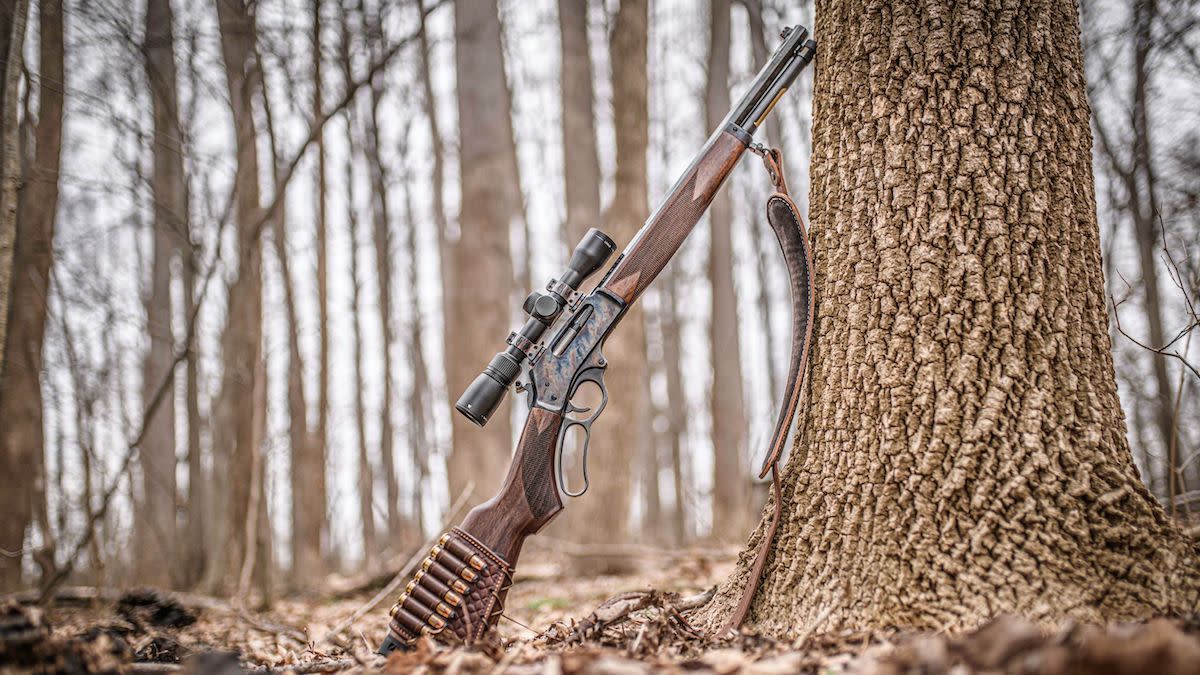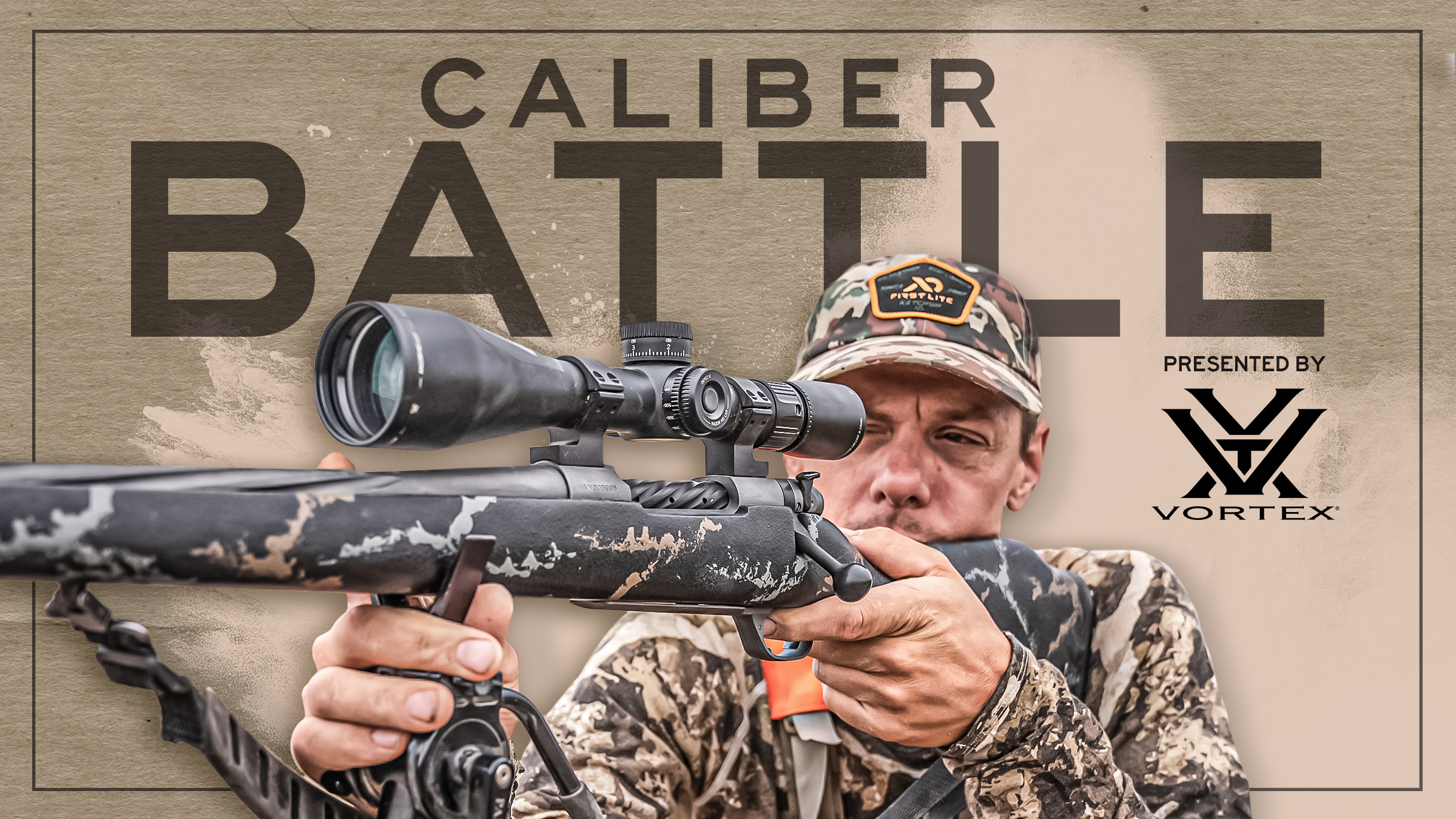
Often attributed to King Solomon, this famous adage pretty well sums up cartridge development over the last 40 years or so: “What has been will be again, what has been done will be done again; there is nothing new under the sun.”
Some modern cartridges have improved upon their predecessors, but hunters and sport shooters are rightly skeptical that The Latest Thing™ always surpasses what came before it.
Take the .450 Bushmaster, for example. Released in 2007 and designed to be used in AR-platform semi-automatic rifles, the .450 promised a massive ballistic advantage over the .223 Remington with the ability to take big game animals out to 250 yards.
It earned instant popularity and is still widely chambered. But there’s another .45-caliber cartridge that offers similar ballistics and has been around much, much longer.
The .45-70 Government was first adopted by the U.S. military in 1873 in the “Trapdoor” Springfield rifle. It served for 19 years until being replaced by the .30-40 Krag, and it’s enjoyed a resurgence in recent decades among American rifle makers.
Why would a hunter opt for the younger .450 Bushmaster when the .45-70 has been doing yeoman’s work for nearly 150 years? Read on to find out.

Ballistics
While the first iterations of the .45-70 would be woefully underpowered by today’s standards, smokeless powder has given the Government a kick in the pants. Most .45-70 offerings can push a 300-grain bullet about 1850 feet-per-second (fps) and produce 2,280 foot-pounds (ft.-lbs.) of energy at the muzzle. Some increase that velocity by 200 to 300 fps, but all of Federal’s offerings hit 1,850 fps coming out of the barrel.
The .450 Bushmaster can also be loaded with a 300-grain bullet, and with that projectile it basically mimics its predecessor (1,900 fps, 2,405 ft.-lbs.). However, the Bushmaster can also be found more commonly loaded with bullets in the 250-grain range, which increases both velocity and energy. This 260-grain Fusion, for example, flies 2,200 fps at the muzzle and produces 2,794 ft.-lbs. of energy.
That increased velocity makes the bullet shoot flatter, which helps the cartridge deliver on its 250-yard promise. While the 300-grain .45-70 mentioned above drops about 42 inches at 300 yards, the 260-grain .450 Bushmaster only drops 37 inches. At that distance, it’s still traveling about 1,155 fps and delivering 770 ft.-lbs. of energy.
It’s possible to find .45-70 options that more closely mimic the lighter bullets of the .450 Bushmaster. Some cartridges are loaded with 250- or 225-grain bullets and those can offer as much as 2,700 fps of velocity and a whopping 3,700 ft.-lbs. of energy. But the .450 is much easier to find loaded with these lighter bullets, which offers a significant advantage if you’re needing to hit an animal beyond 150 yards or so.
Of course, if you’re wanting a bullet heavier than 300 grains, the .45-70 is the better option. While some companies make subsonic .450 Bushmaster with 395-grain bullets, the .45-70 can be had in a wide variety of loads using 325- to 400-grain bullets. These projectiles have an even more limited range, but they offer exceptional power at short distances on large animals.
Bottom line? Pick your poison. The .450 Bushmaster generally uses lighter bullets that reach out a little farther while the .45-70 shines in close-range, big-bullet scenarios. But when comparing apples to apples, the .450 offers a slight velocity advantage, which is why this round goes to the Young Gun.
Winner: .450 Bushmaster
Shootability
Neither the .45-70 nor the .450 Bushmaster enjoy reputations as soft shooters. They’re both large-caliber cartridges that shoot heavy bullets north of 2,000 fps, and all that energy at the muzzle translates into the shooter’s shoulder.
However, the .450 Bushmaster is easier to shoot for several reasons. First, it usually produces less recoil than the .45-70. Recoil can vary widely from load to load, but the .45-70 usually produces greater than 25 ft.-lbs. of recoil while the .450 Bushmaster lives in the 20 ft.-lb. range. Shooting a bolt-action .450 Bushmaster with a muzzle brake feels about like shooting a bolt-action .308 Win. A .45-70, on the other hand, will usually feel more like a .300 Win. Mag.
The .450 Bushmaster also has the advantage of being commonly chambered in AR-pattern rifles. These rifles feature an integrated buffer system that absorbs recoil even in a lightweight rifle. This isn’t a feature of the cartridge, per se, but since the .450 was designed specifically for use in these kinds of rifles, it’s worth a mention.
We define “shootability” as recoil plus ammo cost and availability, and the .450 Bushmaster wins that second category as well (but only barely).
The Government had a 134-year head start on the Bushmaster, and its continued popularity means there are more options for the .45-70 than for its counterpart. Midway USA, for example, offers 44 options in .45-70 while only 17 in .450 Bushmaster.
When it comes to ammo cost, however, the .450 Bushmaster usually has the .45-70 beat. You’ll pay a few bucks less for a box of 20 .450, and you can find Bushmaster cartridges for as little as $1.40 per round. The cheapest .45-70, on the other hand, run north of $2 per round, according to Midway USA.
Winner: .450 Bushmaster
Versatility
Frank C. Barnes reports in “Cartridges of the World” that both the .45-70 and the .450 are suitable for any North American big game animal from deer to grizzlies. Neither are ideal for varmints given their limited range and large-diameter bullet, but both are excellent deer cartridges that can also target elk, moose, and bear at ranges within 200 yards or so.
These cartridges are also closely matched when it comes to rifle versatility. If you’re wanting a semi-auto rifle, the .450 is the way to go. Several companies offer AR-pattern rifles in the Bushmaster, and several additional companies offer bolt-action and single-shot rifles in the same.
If you’re looking for a lever action gun, the .45-70 is the obvious choice. Numerous companies chamber a lever gun in the old Government, and you can also find a variety of single-shot options. A few boutique gun makers chamber AR-type rifles in the .45-70, but those are few and far between. The used market will also favor the .45-70 given its extensive history in the U.S.
Covering the same range of animals and with a similar selection of firearms, these cartridges are ending this round in a draw.
Winner: Draw
And the Winner Is…
The .45-70 and the .450 Bushmaster are more ballistically similar than proponents of The Latest Thing™ would probably like to admit. With bullets of the same weight, the velocity, energy, and trajectory are virtually identical.
Still, the .450’s lighter bullets give it a slight advantage in most hunting situations. The ability to take large game at close range and reach out to 200 yards means that the newer cartridge does make some improvements over the old-timer.
Sometimes, there really is something new under the sun.
Overall Winner: .450 Bushmaster
Feature image via Justin Holt.




Conversation